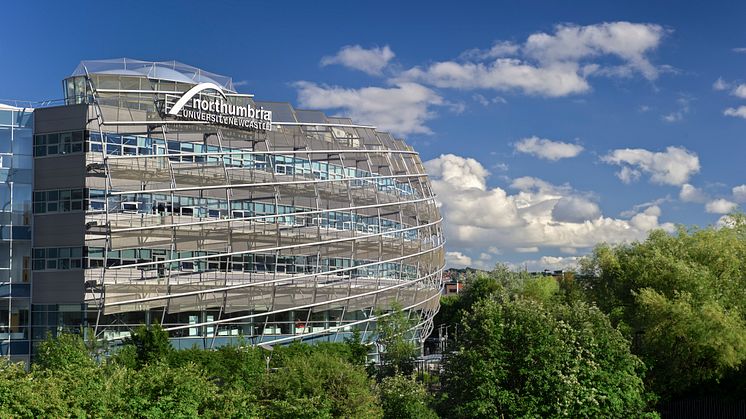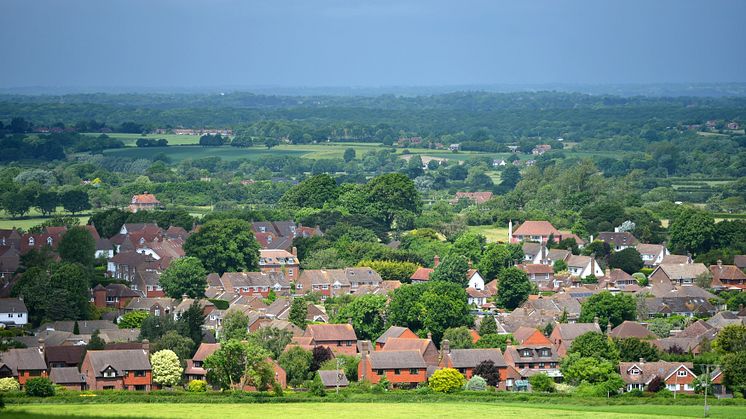Press release -
EXPERT COMMENT: How to embrace urban living, but avoid an apocalypse
Paul Jones, Professor of Architecture at Northumbria, writes about the future of cities for The Conversation.
Cities – we are repeatedly told – are the future. Governments and global corporations seek to increase productivity by accelerating urban growth, while more and more citizens migrate to cities, in search of a better life. Indeed, the Chinese government recently unveiled plans to construct a city three times the size of New York, calling it a “strategy crucial for a millennium to come”.
Yet as it stands, visions of our urban future are bleak.
By 2050, it is predicted that up to six billion inhabitants will live in urban areas – more than two thirds of the world’s population. There could be as many as 30 cities with populations exceeding 10m, and massive urban areas may merge to form megacities, resulting in urban populations exceeding 50m.
According to Mike Davis, author of Planet of Slums, approaching two billion of the world’s inhabitants will live in slums, scratching out an existence without access to the basic services necessary for life. Another four billion will live severely compromised lives within urban sprawl, left to fight for resources as city governments fail to cope with the rapid influx of people.
Social services and health facilities will break down. Human catastrophes such as starvation and the spread of disease will result from unsanitary conditions and high population density. The megacities of the future will have weak and unsustainable local economies, that will negatively affect citizens’ lives in myriad ways.
Wealth will not provide immunity from these issues. Pollution will rise exponentially, with toxic smog regularly enveloping entire cities. This will inevitably lead to a rise in respiratory diseases, which are already emerging as one of the three major health risks to the modern population. Bad air quality will be made worse by the urban heat island effect, as parks and rural hinterlands are built over to house the influx of people.
Nature will struggle to gain a foothold in the future city, with rural land predicted to shrink by 30% to accommodate urban expansion. The lack of countryside and green space will ultimately contribute to the sixth recorded mass extinction of animal and plant species.
A brighter future
But there is a way to avert this apocalyptic vision. Efforts to control the rapid and chaotic expansion of cities must go hand in hand with tackling the global environmental crisis, brought about by climate change. Governments, however, have proved unwilling or unable to reconcile the interests of global corporations with those of everyday people and the environment; this can be seen through their support of projects such as mining the Alberta Sands and oil operations in the Niger Delta.
As such, any alternative to this bleak urban future will require a radical shift in governance and economic philosophy. Scholars argue that society’s economic aim should be the sustainable production and fair distribution of wealth – rather than the maximisation of profit. Devolving wealth and power will help to build robust local economies and strong communities, which can mitigate the pressures of global urbanisation.
These changes should also be manifest in the physical structure and form of urban communities, with compact, densely populated, sustainable and self-governing community developments, as opposed to laissez-faire urban sprawl. In alternative future cities, urban blocks will support all the immediate needs of their inhabitants; from healthcare to housing, education, food production, clean water and sanitation.
Welcome to the Organicity
To better understand what such a place might actually be like, David Dobereiner, Chris Brown and I created Organicity: an illustrated prototype for localised, autonomous, sustainable, urban community infrastructure. The Organicity is densely occupied, with residential, urban agriculture, retail, industry, commerce, education and health facilities stacked above each other, accommodating approximately 5,000 people per unit.
Automated industries and waste processing are located beneath the living zone, where there is no need for natural light. Each unit has a primary industry which trades with other neighbouring communities to generate income to support the infrastructure. Resources should be managed at a local level, with a higher level of responsibility than is currently shown by global corporations.
Protecting the environment and supporting a diverse range of wildlife would be a natural function of these new communities. Biodiversity could be promoted by green corridors, situated near education, health and office spaces so that children and workers can benefit from the proximity of a rich natural environment.
People power
Investing in local people through the provision of skills and education will add to the commercial viability of the community, as well as building cohesion, purpose and mutual respect. As the sociologist Jane Jacobs argued back in the 1970s, for cities to remain viable they should become the producers of resources, rather than insatiable consumers.
In the Organicity, each development will have the necessary expertise for the community to flourish, including doctors, architects, solicitors, dentists, as well as skilled and unskilled labour. This new urban model transforms city blocks into productive environments. For example, the development of urban farming would boost food production and prevent starvation, which would be an inevitable consequence of unimpeded urban growth.
The developments will vary in scale, with the bigger ones housing hospitals and other community facilities that require specialist facilities. The prototype reinvents the concept of “terraced housing”: land is stepped backwards up a slope, forming true terraces, where rows of houses are arrayed to embrace the public plaza and allotment gardens.
Within these communities, it is essential that people work close to where they live, to reduce the impacts of transport: not only will this tackle pollution, it will also afford people more quality time with their families and local community.
Sharing communal resources – including machinery and cars – is an important principle of urban sustainability. Communal ownership of assets, including real estate and green space, is essential for this model to work. Renewable technologies could also be community-owned, which would help to break people’s dependency on fossil fuel.
By shifting from globalisation to localisation, and creating smaller, self-sufficient communities within sustainable developments, cities could regain their equilibrium. From where we stand today, the Organicity may sound like a Utopian dream. But if we’re to avoid an urban apocalypse, we’re going to need strong alternative visions, to change the way we imagine and plan for the cities of the future.
This article was originally published by The Conversation. Read the original article here.
Topics
Categories
Northumbria is a research-rich, business-focused, professional university with a global reputation for academic excellence. To find out more about our courses go to www.northumbria.ac.uk
If you have a media enquiry please contact our Media and Communications team at media.communications@northumbria.ac.uk or call 0191 227 4571.










